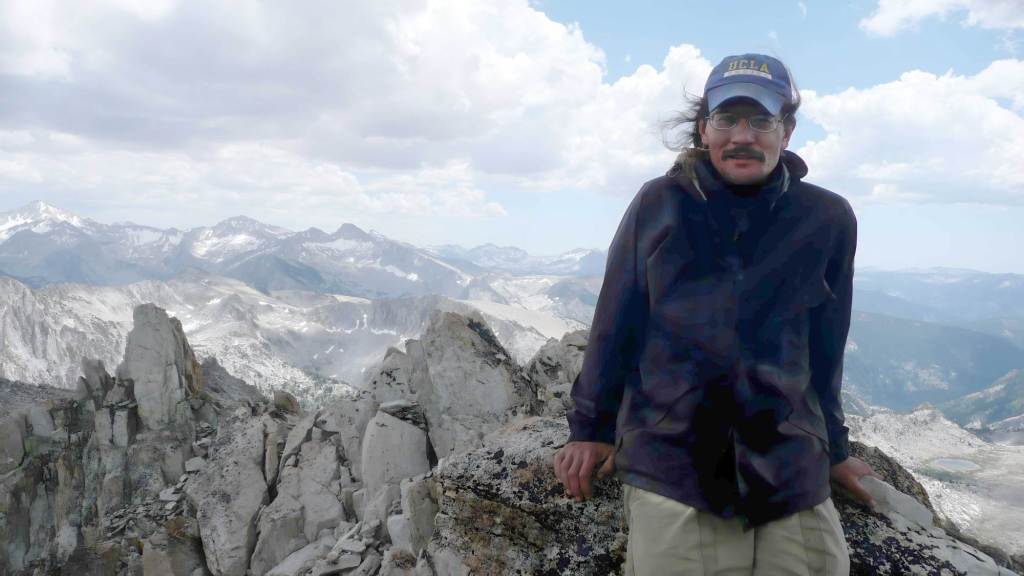
A 2-inch gap between the bunk and the wall are what allowed Matthew Settles to hang himself in a San Diego jail cell two and a half years ago.
That tie-off point is depicted in photographs and a detailed description from the homicide investigation into the 54-year-old’s 2022 death in solitary confinement in George Bailey Detention Center.
Such an investigation is a routine step when anyone dies in sheriff’s custody, even when their cause of death seems clear. But the information it yields has usually been exempt from public disclosure, absent a lawsuit.
That has changed somewhat under a new state law intended to boost oversight of jails. The San Diego Union-Tribune obtained the homicide files, along with other records, under that law, known as Senate Bill 519.
But gaps in materials disclosed by sheriff’s officials raise questions about whether the law is being interpreted as intended.
SB 519 was introduced by then-Senate President Pro Tem Toni Atkins, D-San Diego, in April 2023, following a multi-part investigation by the Union-Tribune and a subsequent scathing state audit that found San Diego County jails had the highest mortality rate among California’s large jail systems.
The law requires sheriff departments throughout California to release records tied to investigations of deaths in county jails — photographs, audio and video evidence, homicide reports, materials submitted to the district attorney for review and any records of disciplinary action if a deputy violated policy or protocol.
In July, the San Diego Sheriff’s Office told the Union-Tribune that it would be “proactively” releasing records and created a link on its website to access the reports.
But it was only after requests by the Union-Tribune and by attorneys leading a federal class-action lawsuit over jail conditions that reports were released to the public.
For now, there are two sets of files available — those related to Settles’ death and the death of Eric Wolf on Jan. 5, 2024, in the Central Jail.
SB 519 says records must be produced within 45 days, but a spokesperson for the Sheriff’s Office said the process of reviewing the materials and redacting information that could violate privacy rights was “resource intensive” and “demands significant time and attention to detail.”
In addition to investigatory records, the law requires sheriff departments to release all “documents setting forth findings or recommended findings” made after a person dies in custody.
No such records are included in either man’s file, despite clear evidence of safety lapses that contributed to their deaths.

Twenty-two people died by suicide in San Diego jails between 2013 and 2016 — most of them by hanging. In 2018, a consultant hired to assess suicide prevention measures in San Diego jails identified tie-off points as a problem, and sheriff’s officials pledged to remove them.
But aside from the homicide detective’s note about the tie-off point in Settles’ cell, there is no mention in the report of it having been identified as a problem or remedied.
When asked if the tie-off points remain, the Sheriff’s Office declined to answer, citing a wrongful death lawsuit Settles’ family filed last year.
There is also no mention of whether other cells in the module, which houses men with severe mental illness, had a similar design.
In Wolf’s case, a homicide detective concluded that his cellmate, whose name is redacted in reports, brought the fentanyl-laced drugs that caused Wolf’s death into jail.
A bindle of drugs was clearly visible on the cellmate’s body scan, the detective wrote in his report, but the deputies running the scanner missed it.
“I observed a clear abnormality in his buttocks/scrotum area,” the detective wrote after reviewing the scans. “I believe (redacted) brought in dangerous narcotics and was in possession of them.”
In an interview with a homicide detective shortly after Wolf’s death, his parents asked how drugs had gotten into the jail. Wolf had been homeless and struggled with mental illness; his parents said they initially had been relieved when he was arrested, “because they believed he would be in a safe environment and off the streets.”
They “want answers to understand how Wolf got a hold of drugs in a custodial environment,” the report says.
The San Diego Sheriff’s Office has a Critical Incident Review Board, or CIRB, that reviews in-custody deaths for “potential misconduct, criminal negligence or behavior, policy violations, training deficiencies, or other areas where we can improve and make our facilities safer for staff and those in our custody.”
If CIRB made findings in either case, they’re not part of the public record. This is a problem, said David Loy, legal director of the First Amendment Coalition.
“If there’s a document that says ‘this is what we found, and this is what we recommend,’ that should be disclosed,” he said. “This law was written precisely to increase public trust by increasing transparency.”
The Union-Tribune asked the Sheriff’s Office how it interpreted SB 519’s requirement that “findings or recommended findings” be released.
Sheriff’s Office spokesperson Kimberly King responded that the sheriff had “released all relevant documents and materials in compliance with this law.”

Grace Jun, the attorney representing the Settles family in their lawsuit, said homicide investigations aren’t designed to get to the root cause of a death.
“While homicide investigators should review every in-custody death, these types of homicide investigations are limited, because investigators are attempting to assess criminal liability,” she said.
“Matthew was a seriously mentally ill individual who died by suicide while housed in isolation,” she added. “Homicide detectives are not going to know that administrative segregation is the worst place to house a person like Matthew and that the medical literature urges that people like Matthew not be housed in isolation.”
The family’s lawsuit argues that Settles should have been placed in the Central Jail’s psychiatric security unit, where he could be closely monitored, instead of being transferred to George Bailey, which lacks a psychiatric unit.
In Settles’ file are dozens of reports documenting the many times he was placed on suicide watch at the Central Jail.
He also engaged in self-harm. In February 2022, shortly after booking, he dove headfirst into a metal bunk, requiring stitches. A month later, he stabbed himself in the eye with a needle while a nurse was trying to draw blood.
A status report dated July 15, 2022, recommended Settles be housed in administrative segregation “due to a propensity for violence and a failure to adhere to minimum jail standards.” Yet a note from a homicide investigator said Settles “had exhibited no negative behavior since 7/15/22.”
Prior to his incarceration, Settles was under a conservatorship — meaning a judge had deemed him too mentally ill to care for himself.
The family’s lawsuit argues that Settles’ conservator, who should have been involved in decisions about his care, was never contacted. Settles’ case manager tried to visit him after he was transferred to George Bailey but “was consistently stonewalled and obstructed,” the suit says.
Incident reports in Wolf’s file also suggest that he needed a higher level of care because of his mental illness, but ultimately ended up in the jail’s general population.
In late July 2023, he was transferred to the Central Jail from the South Bay Detention Facility after his cellmates told a deputy that Wolf was skipping meals and instead was drinking his own urine and eating his feces.
Records show Wolf was placed in enhanced observation housing where he could be more closely monitored. But it was a temporary stay. Two status reports from October show that his mental health had declined significantly.
On Oct. 8, a deputy noted that Wolf “talks to himself and makes nonsensical statements.”
Wolf’s cell was filled with trash, the deputy wrote, “and smells of feces.”
“Wolf’s cellmates informed me that he needs to leave because he eats his own feces and urine,” the report says. “I am recommending Wolf to be evaluated by mental health.”
A report from a different deputy, dated Oct. 18, says Wolf was “observed drinking his own urine” and that his cell smelled strongly of human waste. The deputy also recommended that Wolf be evaluated by a mental health clinician.
A report from the following day shows that Wolf was moved to the jail’s psychiatric security unit. A week later, a judge ordered that he be involuntarily medicated.
At some point, Wolf was moved from the psychiatric unit to a three-person cell on the fifth floor. Records indicate that his particular module was often subject to lockdowns for rule violations, forcing the men to remain in their cells for 24, 48, even 72 hours at a time.
Wolf’s cellmate told a homicide investigator that he “typically slept most of the day” and “maybe was a little crazy from being locked up.”
In addition to transparency measures, Atkins’ legislation also added the position of director of in-custody death review to the Board of State and Community Corrections, an independent authority that monitors California’s jails and juvenile detention facilities.
Regulations introduced last year to guide those state-level death reviews include assessing “the appropriateness of clinical care; whether changes to policies, procedures, or practices are warranted; and to identify issues that require further study.”
Jun said she wants to see the Sheriff’s Office conduct, and release, similar assessments “so the public can understand whether there are systemic issues and deficiencies that are causing people to die at San Diego jails.”





